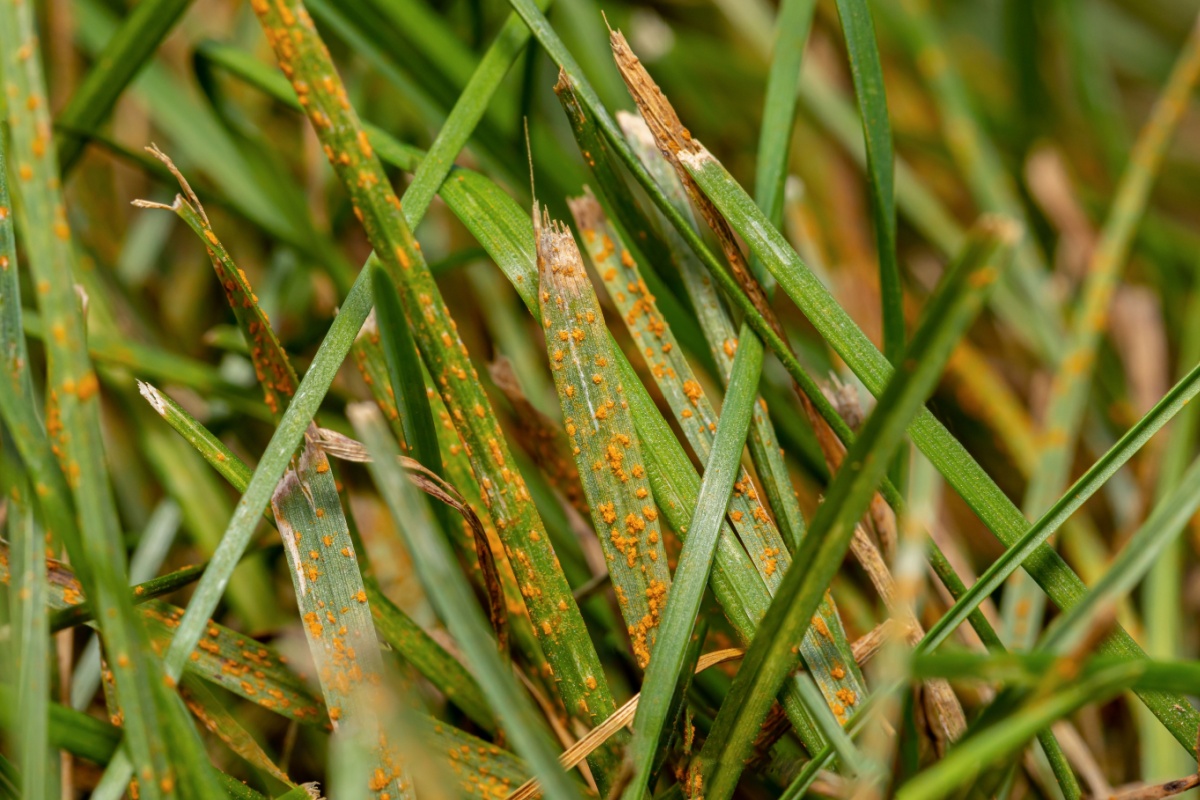
Is your lawn patchy and brown? Are your trees sporting leaves with spots, blisters, or mildew? If you’ve noticed these problems, there’s a good chance your lawn and trees are suffering from diseases. Whether it’s fungal infections in your lawn or bacterial diseases in your trees, these issues need prompt attention. Untreated diseases can spread quickly, affecting not only the beauty of your landscape but also the overall health of your plants. To make sure you’re able to take action as soon as possible, familiarize yourself with the most common lawn and tree diseases in Pennsylvania.
Common Lawn Diseases
Poorly maintained lawns are highly susceptible to diseases, including brown patch, dollar spot, and powdery mildew. Are you concerned your landscape may have a disease? Read over these top lawn diseases in Pennsylvania to see if any of them sound familiar, and then reach out to your local lawn care company for treatment:
Brown Patch
One of the most common lawn diseases affecting cool-season grasses like perennial ryegrass and tall fescue is brown patch. If you see brown spots in your lawn during the warm months, you might be dealing with this fungal disease. The fungus thrives in warm, humid weather, especially during periods of wet weather and poor drainage. The affected area will often turn light green or reddish brown, with irregular patches ranging from a few inches to several feet wide. To treat brown patch, improve soil drainage, water your lawn in the early morning, and consider using nitrogen fertilizer to promote healthy grass growth.
Dollar Spot Lawn Disease
Another common lawn disease is dollar spot, which affects cool-season grasses like fescue, ryegrass, and Kentucky bluegrass. Dollar spot appears as small, straw-colored spots about the size of a silver dollar, hence the name. As the fungus spreads, these spots can merge, creating large areas of dying grass. High soil moisture and wet weather contribute to the spread of dollar spot, so be mindful of overwatering your lawn.
Summer Patch
Summer patch is a common lawn disease that also affects cool-season grasses. The fungus that causes this disease thrives in hot, humid weather and poor soil drainage. You’ll notice dark green patches surrounded by yellowing or dying grass. Over time, the disease progresses, turning the entire lawn brown. To control summer patch, consider aerating your lawn to improve soil drainage and using a fungicide if necessary.
Gray Snow Mold
This fungal disease typically occurs after snow cover melts in early spring. You’ll notice circular, matted patches of grass that appear gray or white. If left untreated, gray snow mold can cause dead areas on your lawn, turning what was once healthy grass into discolored patches. Preventing snow mold starts with proper fall lawn care, including regular mowing and avoiding heavy seed production late in the season.
Rust Fungi
Rust fungi are a group of diseases that often affect lawns and typically appear in late summer or early fall. The fungi thrive in conditions of high moisture, heavy dew, and warm temperatures. You can identify rust fungi by the reddish-brown or orange dust-like spores that develop on the grass blades. These spores can easily rub off on shoes, pets, or lawn equipment. Over time, the affected grass may turn light green or yellow and become thin, reducing the overall health of the lawn.
Gray Leaf Spot
Gray leaf spot is another common lawn disease that primarily affects warm-season grasses like St. Augustine grass and Bermuda grass. The disease causes small, irregular gray or brown spots on the grass blades, which can merge to form larger, discolored patches. As the disease progresses, the affected area of the lawn may appear scorched or burned. Gray leaf spot thrives in humid weather and often spreads rapidly in conditions of poor drainage and high soil moisture. To control gray leaf spot, improve your lawn’s drainage, avoid overwatering, and use fungicides to prevent the fungus from spreading further.
Common Tree Diseases
Just like your lawn, your trees can be affected by a variety of diseases if they are not properly cared for. The most common tree diseases to be concerned about in Pennsylvania include:
Powdery Mildew
Powdery mildew is a common fungal disease that affects various tree species. You’ll notice a white or gray powdery coating on the leaves, which can weaken the tree over time by reducing its ability to photosynthesize. This fungal growth thrives in humid weather and spreads through fungal spores. Controlling powdery mildew involves applying fungicidal sprays.
Leaf Spot & Leaf Blight
Leaf spot diseases are another common issue affecting trees in Pennsylvania. These diseases cause small, dark spots on the tree’s leaves, which can eventually lead to leaf blight — where large portions of the leaf tissue die. As the disease progresses, infected leaves may turn yellow or brown, leading to premature leaf drop. While leaf spot diseases are rarely fatal, they can weaken a tree over time if left untreated.
Canker Disease
One of the most common tree bark diseases is cankers, which can affect both deciduous and evergreen trees. This fungal disease causes sunken, discolored patches or cracks on the tree trunks or branches, leading to a rough, blistered appearance. As the cankers grow, they may girdle branches or even the entire tree, cutting off the flow of nutrients and causing sections of the tree to die.
Root Rot
Tree root diseases can be difficult to spot because they affect the underground portion of the tree, but they are among the most destructive types of tree diseases. One of the most common root diseases is Root Rot, which occurs in areas with poor soil drainage or during periods of prolonged wet weather.
Root rot is caused by fungi that thrive in overly moist conditions and infect the tree’s root system. As the disease progresses, the tree may show signs of wilting, yellowing leaves, stunted growth, or even premature defoliation. Infected trees often develop a weak, unstable root system, which can lead to the tree becoming vulnerable to wind or storm damage.
How to Control and Treat Lawn Diseases
Preventing lawn diseases starts with maintaining a healthy lawn. Proper mowing, aeration, and watering techniques can go a long way in preventing fungal diseases like brown patch and gray snow mold.
If you suspect your lawn has a disease, it’s essential to act quickly. Disease control treatments, such as fungicides, can stop the spread of lawn fungus before it destroys large areas of grass. Because routine maintenance requires a lot of time and effort, it’s beneficial to partner with a lawn care company that offers comprehensive disease control solutions tailored to your specific lawn type and condition.
How to Control and Treat Tree Diseases
Tree diseases can be more challenging to manage, especially for large trees that require specialized care. Regular inspections of your trees can help you catch early signs of infection, like leaf rust, leaf spots, or unusual growths on the bark. Infected trees may need pruning, fungicide treatments, or even soil treatments to improve their health. Our tree care professionals can help you determine the best road to recovery for your beloved trees.
Contact Lawn Specialties for Expert Disease Control
With our lawn and tree care professionals on the job, you don’t have to worry about fungi ruining your beautiful landscape. With over 35 years of experience treating common lawn and tree diseases, our team knows how to keep your yard looking its best. Plus, we prioritize the use of environmentally friendly products so that you can get the best results while protecting your desired plants and even your loved ones!
If you’re in Hazleton, PA, and need help restoring your lawn or trees, contact Lawn Specialties for professional lawn care services today. Our expert team will work with you to develop a customized treatment plan to ensure your lawn stays lush and your trees remain healthy year-round.

